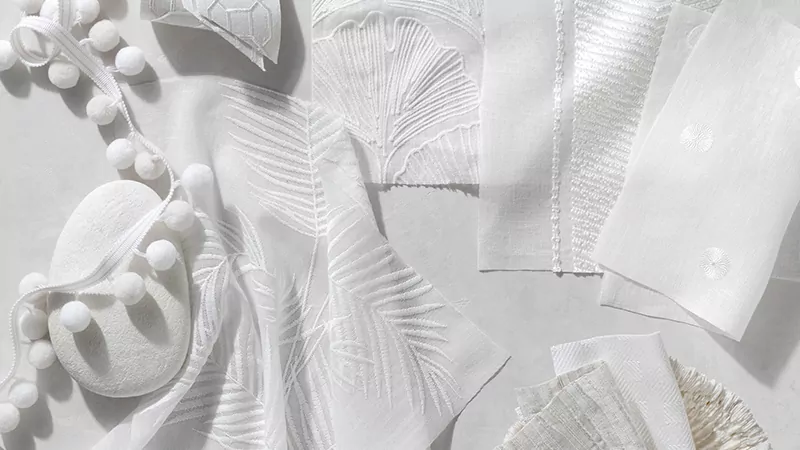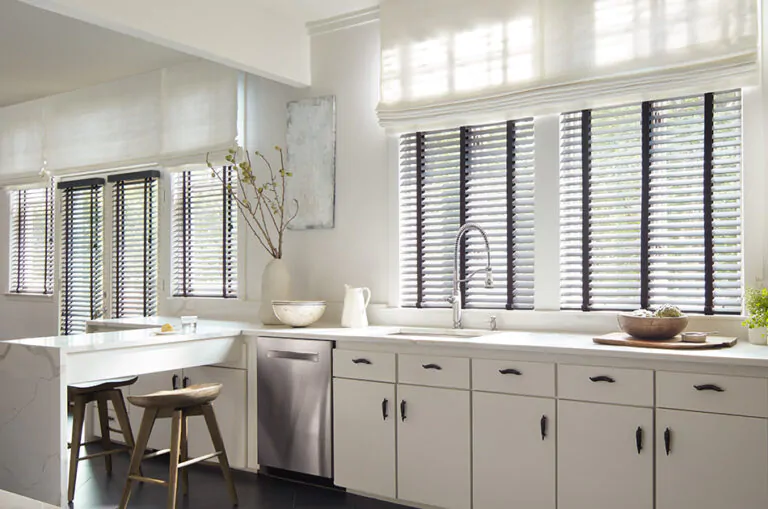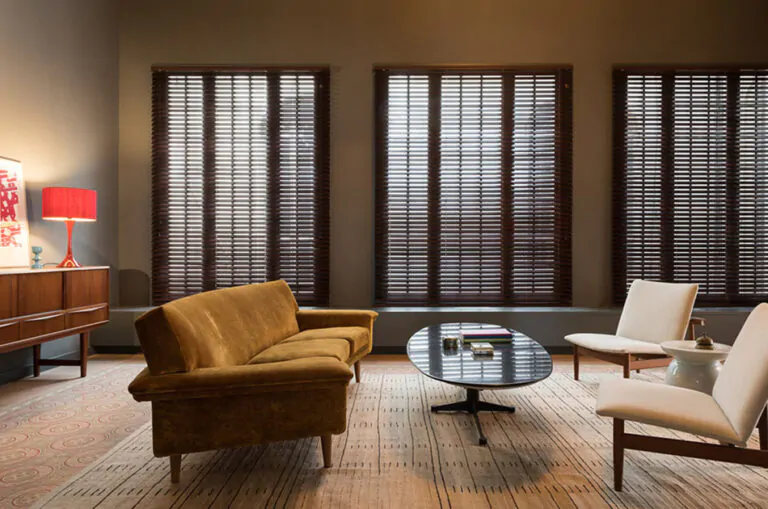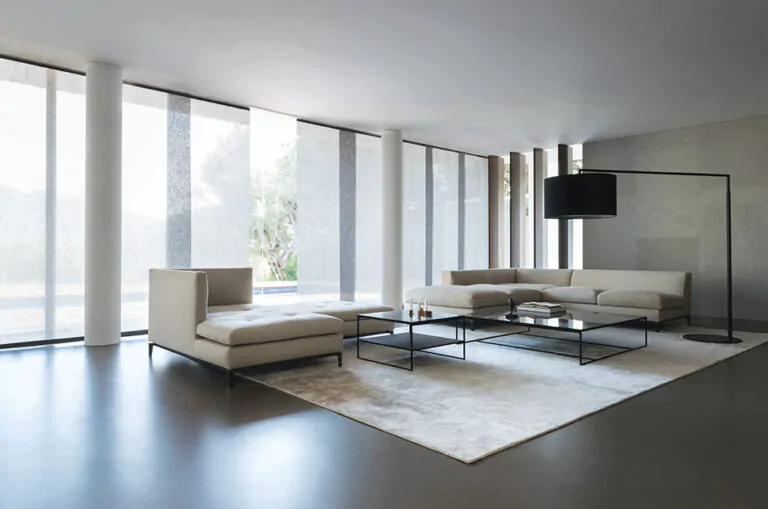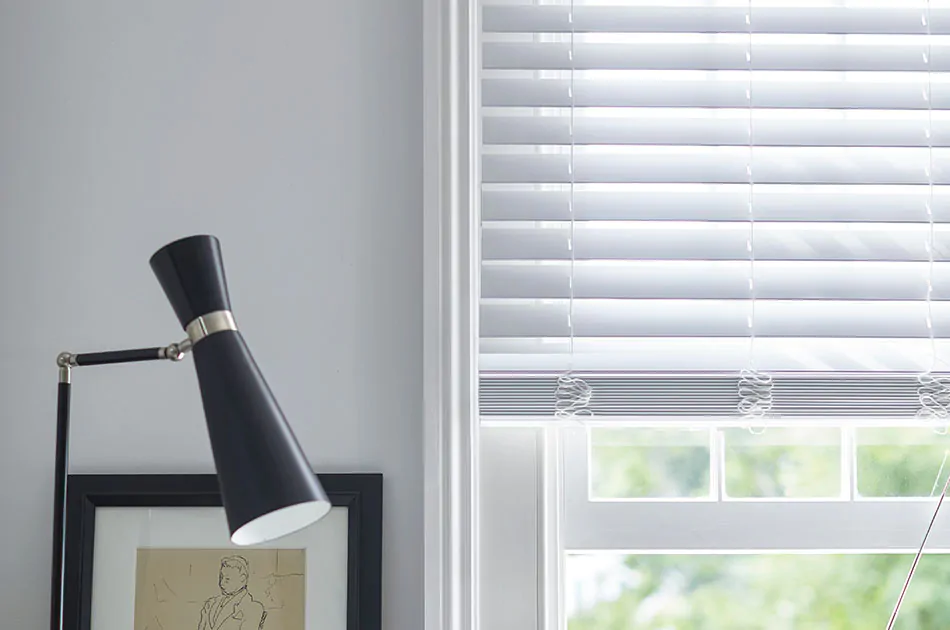
What Is Faux Wood vs Real Wood Blinds?
What is faux wood? If you’ve been looking for new furniture, cabinetry, blinds or other home goods products typically made with wood, you’ve likely come across faux wood as an option. Faux wood is an economical, durable and attractive alternative to real wood in many applications. In terms of blinds, faux wood can be a great choice to give you the real wood look you love with greater moisture resistance and durability.
Learn more about the answer to what is faux wood and dive deeper into Faux Wood Blinds as a worthy alternative to real Wood Blinds.
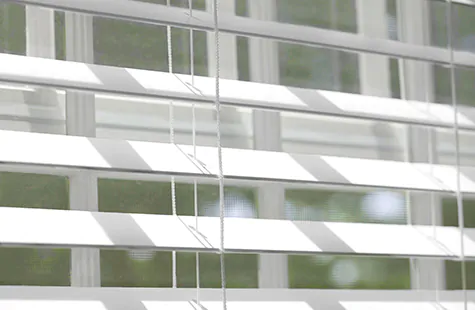
What Is Faux Wood Made of?
Answer what is faux wood made of depends on the product. Faux wood can be made from a variety of materials, including composite, PVC, vinyl and foam wood. The finished product includes a wood grain and is stained to match wood colors for an authentic look.
Faux Wood Blinds from The Shade Store are handcrafted from high-quality foam wood and are available in several colors and finishes.
What Is Foam Wood?
You likely already know that PVC and vinyl are types of plastic material, but you may be wondering, what is foam wood? Foam wood is made from wood fibers that have been processed to form a foam-like material that is then shaped, textured and colored. Our Faux Wood Blinds are made from eco-friendly, responsibly sourced wood fibers, so you can feel good about your choice.
What’s the Difference: Faux Wood Blinds vs Wood Blinds
To understand the answer to what is faux wood, it’s important to know how it differs from real wood. The main difference between these two comes down to material. Faux wood, as you’ve learned, is made from synthetic materials like PVC and vinyl or from naturally derived, processed materials like foam wood. Real wood blinds, on the other hand, are made from organic material like American basswood, bamboo, cherry, oak, etc.
These material differences mean that, between Faux Wood Blinds vs Wood Blinds, each offers its own unique benefits. Learn about these benefits to help you decide which is the better choice for your space.
Benefits of Faux Wood Blinds
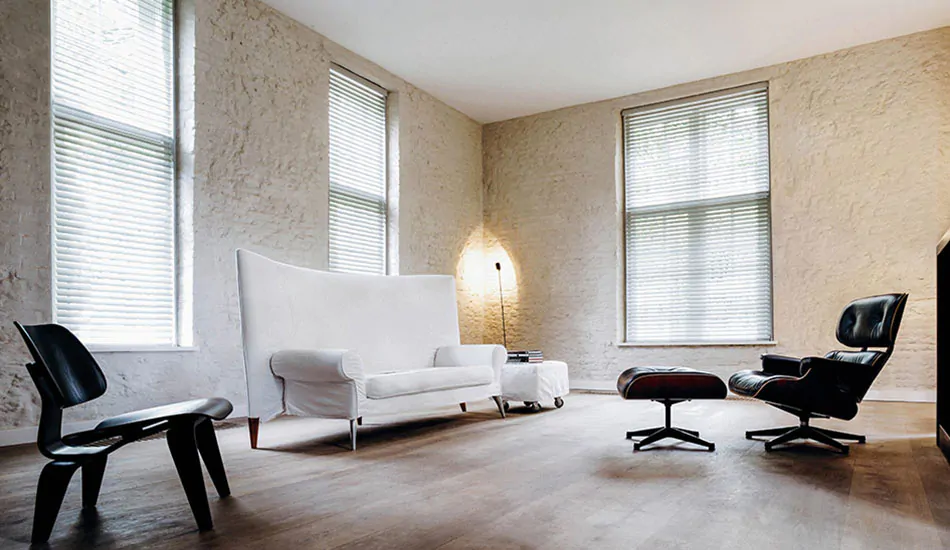
In addition to asking what is faux wood, you might also be wondering what the benefits are of choosing Faux Wood Blinds vs Wood Blinds. Thanks to being made from processed materials, Faux Wood Blinds offer unique benefits that real Wood Blinds don’t, including:
Inviting Real Wood Look That Lasts
Faux Wood Blinds are made to mimic the look of real wood with nature-inspired grain patterns and coloring. Unlike real wood, faux wood won’t fade in the same way, so you enjoy a rich stained wood look for longer even when installed on your sunniest windows.
Greater Resistance to Moisture
The engineered materials of PVC, vinyl and foam wood make them all less vulnerable to moisture damage like mold, mildew and rot. Thanks to their superior moisture resistance, Faux Wood Blinds are a great choice for bathrooms, basements and other areas with high moisture or humidity.
Less Likely to Warp, Split or Crack
Faux Wood Blinds, thanks to their engineered materials are less likely to expand and contract with changes in moisture and humidity, which can cause splitting, cracking and warping in real wood blinds.
Easier to Clean
The finish on Faux Wood Blinds is more resistant to dirt and stains than traditional wood while also being easier to clean with a damp cloth, so you can enjoy beautiful, pristine blinds with less work.
Often More Cost Effective
Faux Wood Blinds are typically more cost effective when compared to traditional Wood Blinds because faux wood is made from man-made materials that are more affordable to source and process than real wood. This means you can get an authentic real wood look for less.
Benefits of Wood Blinds
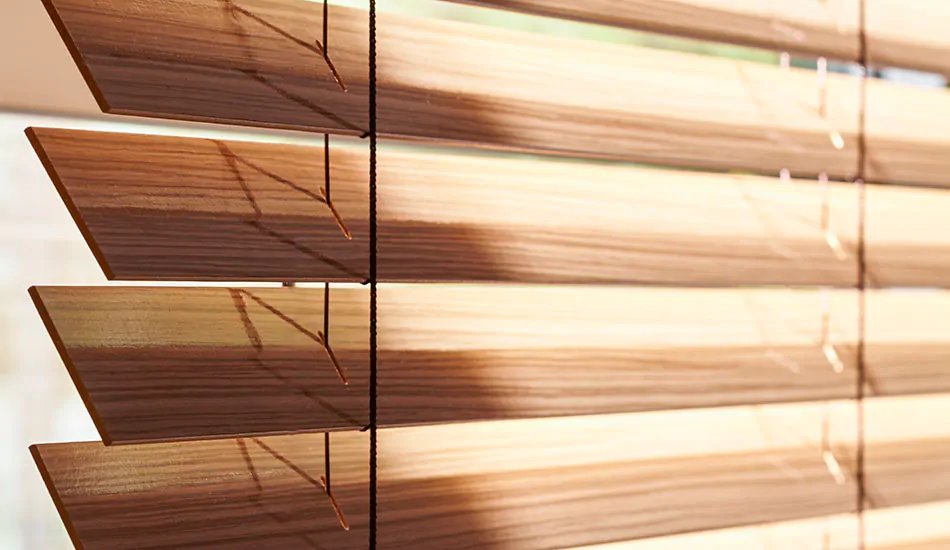
When comparing Faux Wood Blinds vs Wood Blinds, real wood, whether made from basswood, cherry, oak or bamboo, also has unique benefits. Learn about what Wood Blinds can offer to determine if they’re the right choice for your space.
Warm, Inviting & Varied Wood Aesthetics
Real wood boasts natural grain variations and authentic color nuances that you can’t quite get with faux wood. The effect is an inviting, natural aesthetic you can only get with real wood.
More Customization Options
Traditional wood blinds may be able to offer you more customization options. Thanks to the many natural variations in color and texture Wood Blinds come in many more colors and finishes than Faux Wood Blinds, so you’re more likely to find just the right look for your space. Plus, at The Shade Store, Wood Blinds are compatible with decorative tape for a polished finish to your design as well as motorized tilt control for effortless use. However, both decorative tape and motorized tilt are not compatible with cordless lift control, so you’ll only be able to tilt the slats of your blinds. Faux Wood Blinds are not compatible with decorative tape or motorization, only cordless lift and wand tilt.
Lighter Weight & Better for Larger Windows
Real Wood Blinds are lighter in weight than Faux Wood Blinds, making them easier to operate on a daily basis. Plus, being lighter in weight also means they’re a better choice for large, wide windows, since faux wood can get too heavy to operate easily on larger windows.
Better for Insulation
Traditional Wood Blinds provide better insulation than their faux wood counterparts as they absorb heat and cold more readily, which can help regulate your interior temperatures and may save you on utility costs.
Interested in More Options for Blinds?
Beyond Wood and Faux Wood, you also have Metal Blinds as an option for a more modern, industrial aesthetic.
Explore Your Blinds Options Further
Now that you know the answer to what is faux wood, and you have an understanding of the comparison between Faux Wood Blinds vs Wood Blinds, you’re ready to learn more about your choices. Explore your Faux Wood and Wood Blinds color and finish options and order free swatches of your favorites to compare at home. Be sure to carefully look at the color, texture and feel the weight of each to get a sense for which is best suited to your preferences and needs.
